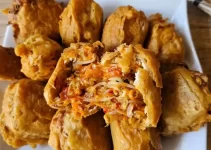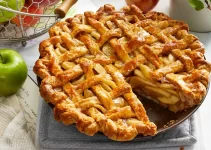Contents
Malabari Paratha, also known as Kerala Parotta, is a delectable South Indian flatbread that hails from the coastal state of Kerala. Renowned for its flaky layers, soft texture, and rich flavor, Malabari Paratha has captivated taste buds across the region and beyond. Let’s explore the origins, preparation, and culinary delights of this beloved Indian delicacy.
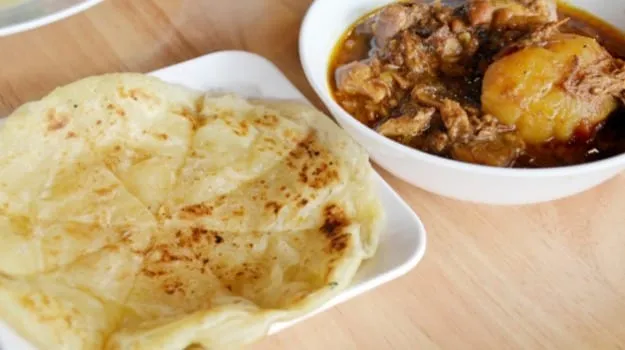
Malabari Paratha
Origins and Cultural Significance:
Malabari Paratha traces its origins to the Malabar region of Kerala, where it has been a staple of the local cuisine for generations. The name “Malabari” refers to the people of Malabar, while “Paratha” denotes the type of flatbread. Historically, Malabari Paratha was prepared in households and eateries as a special treat for festive occasions, celebrations, and family gatherings.
Preparation and Ingredients:
The preparation of Malabari Paratha involves a meticulous process that results in its distinctive flaky texture and layers. The dough is typically made from flour, water, and a small amount of oil or ghee, which is kneaded to achieve a smooth and elastic consistency. The dough is then divided into small portions, rolled into balls, and allowed to rest.
Next, each dough ball is flattened into a thin disc and brushed with oil or ghee. The disc is then folded and rolled into a tight spiral, resembling a coiled rope. This coiled dough is flattened again into a disc and cooked on a hot griddle or tawa until golden brown and cooked through. The layers of the paratha separate during cooking, creating a flaky and tender texture.
Serving and Accompaniments:
Malabari Paratha is typically served hot and fresh off the griddle, accompanied by an array of flavorful side dishes and condiments. It pairs perfectly with a variety of curries, gravies, and chutneys, ranging from vegetarian options like dal curry and vegetable stew to non-vegetarian delights like chicken curry and mutton fry.
In addition to curries, Malabari Paratha is also enjoyed with traditional accompaniments such as raita (yogurt dip), pickle, and sliced onions. The combination of soft, flaky paratha and savory, aromatic curries creates a culinary experience that is both comforting and satisfying.
Variations and Regional Influences:
While the basic preparation of Malabari Paratha remains consistent across Kerala, there are variations and regional influences that add diversity to this beloved dish. Some versions incorporate additional ingredients such as eggs, milk, or yogurt into the dough, resulting in variations in flavor and texture.
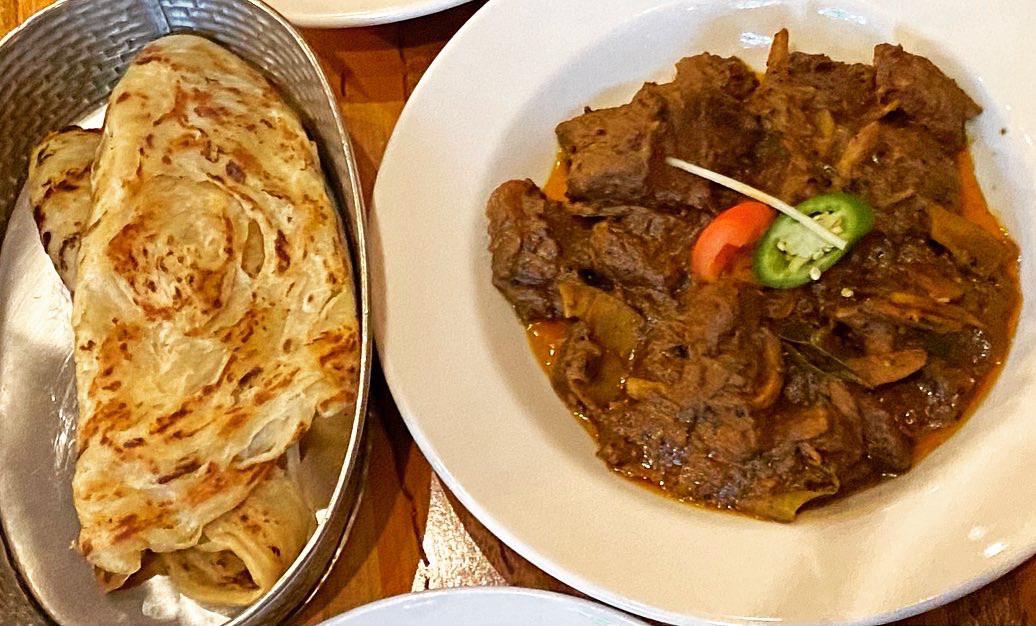
Malabari Paratha
In addition to traditional accompaniments, Malabari Paratha is also enjoyed with innovative toppings and fillings, such as shredded chicken, paneer, or cheese. These variations add a modern twist to the classic dish while retaining its essence and authenticity.
Malabari Paratha is not just a flatbread; it is a culinary masterpiece that embodies the rich flavors, textures, and traditions of Kerala cuisine. With its flaky layers, soft texture, and versatility, Malabari Paratha has earned its place as a beloved delicacy that delights food enthusiasts around the world. Whether enjoyed with spicy curries, flavorful gravies, or innovative toppings, Malabari Paratha is sure to tantalize the taste buds and leave a lasting impression on those fortunate enough to savor its culinary delights.
Exploring the Pros and Cons of Malabari Paratha: A Culinary Journey through Kerala’s Delicacy
Malabari Paratha, a traditional flatbread originating from the goltogel coastal state of Kerala in South India, is renowned for its flaky layers, soft texture, and rich flavor. As a staple of Kerala cuisine, Malabari has garnered acclaim for its culinary delights. However, like any dish, it comes with its own set of strengths and weaknesses. Let’s delve into the advantages and drawbacks of Malabari Paratha to gain a deeper understanding of this beloved Indian delicacy.
Advantages:
- Flavorful and Rich Taste: Malabari Paratha boasts a distinctively rich and flavorful taste, owing to its use of quality ingredients such as flour, oil or ghee, and spices. The layers of the paratha absorb the flavors during cooking, resulting in a delightful culinary experience with each bite.
- Versatility in Pairing: One of the key advantages of Malabari is its versatility in pairing with various accompaniments. Whether served with vegetarian curries, non-vegetarian gravies, or even as a standalone snack with chutney or pickle, Malabari Paratha adapts well to a wide range of flavors and textures.
- Soft and Flaky Texture: Malabari Paratha is renowned for its soft, flaky texture, achieved through a meticulous preparation process that involves folding and rolling the dough multiple times. The layers of the paratha separate during cooking, resulting in a tender and airy texture that melts in the mouth.
- Cultural Significance: As a traditional delicacy of Kerala, Malabari Paratha holds significant cultural importance in the region. It is often prepared during festive occasions, celebrations, and family gatherings, serving as a symbol of hospitality and communal bonding.
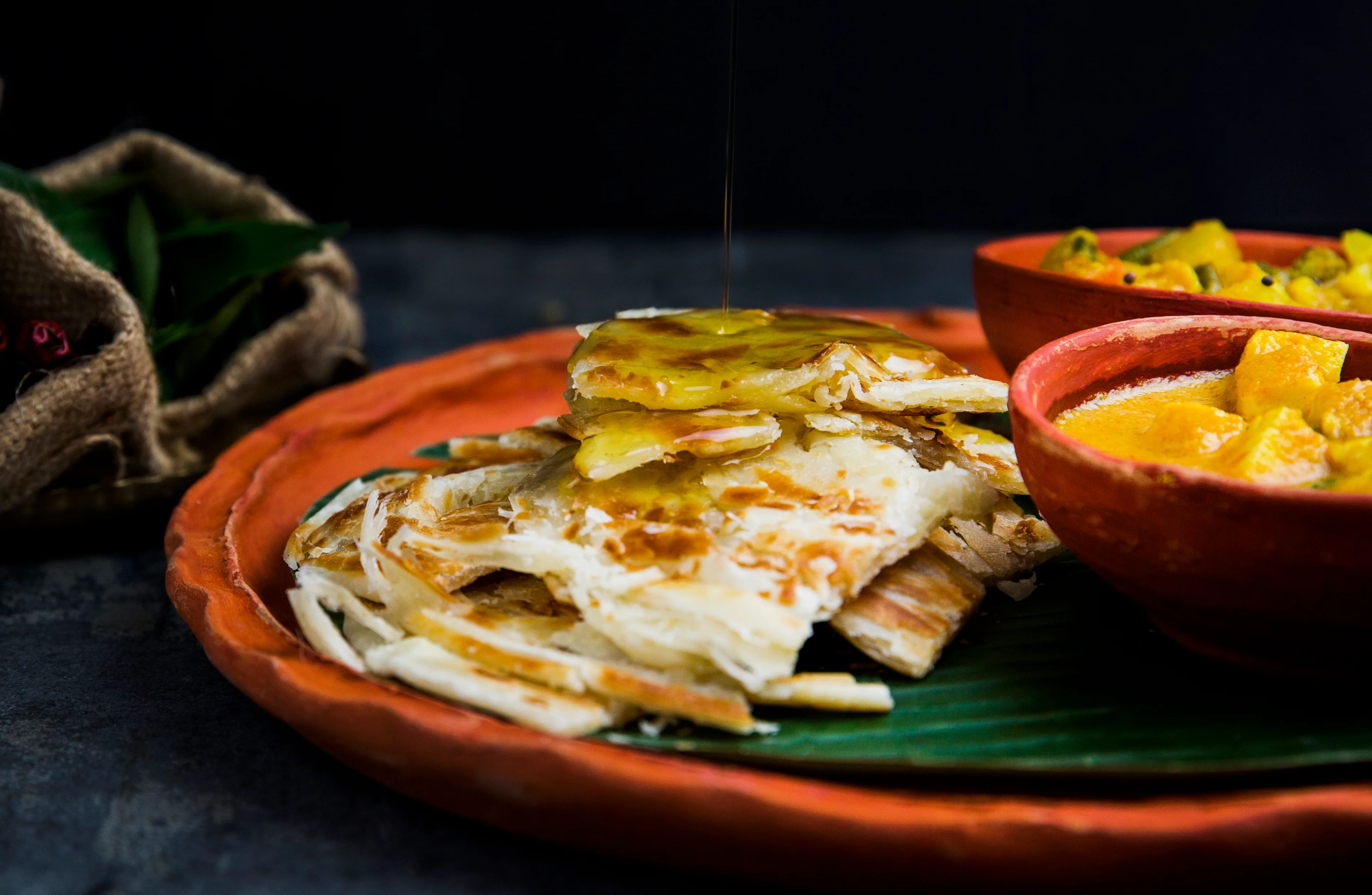
Malabari Paratha
Disadvantages:
- Time-Consuming Preparation: The preparation of Malabari can be time-consuming and labor-intensive, requiring skill and patience to achieve the desired texture and layers. The process of folding and rolling the dough multiple times requires attention to detail and may deter home cooks from attempting to make it from scratch.
- High Caloric Content: Due to its use of oil or ghee in the dough and cooking process, Malabari Paratha tends to have a higher caloric content compared to other types of flatbreads. While delicious, it may not be suitable for those following a strict diet or looking to reduce their calorie intake.
- Potential for Heavy Feeling: The rich and flaky texture of Malabari, while delicious, can also lead to a heavy feeling after consumption, especially when paired with rich and spicy curries. Some individuals may find it overly filling, particularly if consumed in large quantities.
- Limited Accessibility Outside Kerala: While Malabari Paratha is widely enjoyed within Kerala and other parts of South India, it may be less accessible outside the region or in international markets. As a result, those outside Kerala may have limited opportunities to experience the authentic flavors of this beloved delicacy.
Conclusion:
Malabari Paratha is a culinary gem that embodies the rich flavors, textures, and traditions of Kerala cuisine. While it offers a delightful taste experience and versatility in pairing, it also comes with challenges such as time-consuming preparation and high caloric content. Ultimately, the advantages and disadvantages of Malabari Paratha highlight its complexity and appeal, making it a cherished delicacy for those fortunate enough to savor its culinary delights.
Read More Article About “White and Brown Rice: The Ultimate Nutritional Battle“


